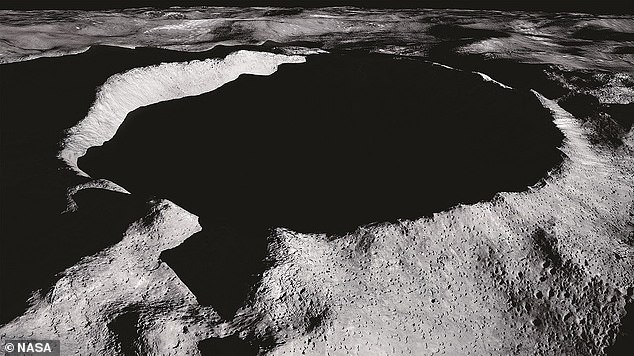
Lunar Shadowed Regions Could Harbor Life, Scientists Suggest
Mysterious Lifeforms May Lurk in Moon’s Shadowy Craters
Scientists suggest microbes could survive in the moon’s permanently shadowed regions (PSRs)—dark, frigid craters near the poles that never receive sunlight. A recent pre-print study (not yet peer-reviewed) proposes that bacteria like Bacillus subtilis, commonly found on spacecraft, might endure in these areas for decades or longer, potentially contaminating future lunar research.
The Science of PSRs
PSRs exist in lunar craters where sunlight cannot reach due to the moon’s minimal axial tilt. These regions are among the coldest places in the solar system, with temperatures plunging to -388°F (-233°C). While space’s harsh UV radiation and extreme heat typically kill microbes, PSRs’ darkness and cold could shield dormant organisms.
Image: Illustration of the moon’s PSRs, highlighting shadowed craters near the poles.
Microbial Hitchhikers
Bacillus subtilis, a hardy Earth bacteria found in soil, animal guts, and even the International Space Station, might survive in PSRs if transported by spacecraft. Although most microbes would perish during lunar landings, studies suggest some spores could withstand high-speed impacts and enter dormancy.
“If any microbes survived, they’d be widely dispersed but preserved,” said study lead John Moores, a planetary scientist at York University. Their dormant state means they wouldn’t reproduce but could remain viable, complicating efforts to study native lunar materials.
Image: Microscopic view of Bacillus subtilis spores, known for their resilience.
Risks for Lunar Exploration
NASA’s Artemis III mission, targeting a 2027 human landing, has identified 13 PSRs near the moon’s South Pole as potential sites. These regions contain water ice, crucial for sustaining future bases, but contamination from Earth microbes could skew scientific data. For example, organic molecules in lunar ice—key to understanding the solar system’s history—might be mistaken for extraterrestrial if mixed with terrestrial bacteria.
Image: Artist’s depiction of Artemis astronauts exploring a lunar PSR.
Modeling Survival in Darkness
Using illumination models developed by researcher Jacob Kloos, the team analyzed Shackleton and Faustini craters—Artemis landing candidates. They found trace heat and UV radiation from starlight or scattered sunlight in PSRs might sustain dormant microbes. The study estimates contamination could persist for tens of millions of years, raising questions about protecting lunar samples.
Why It Matters
While the chance of existing contamination is low, past spacecraft crashes near PSRs (like India’s Chandrayaan-2) highlight risks. Moores stresses minimizing contamination: “It’s essential for accurate analysis of lunar ice and organics.”
As humanity returns to the moon, balancing exploration with preserving these pristine regions will be critical—not just for science, but for uncovering the true story of life beyond Earth.
Image: Diagram comparing PSR conditions to Earth environments where extremophiles thrive.
Word count: ~600


